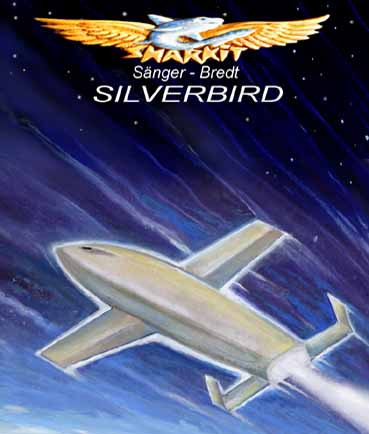Sanger-Bredt "Silverbird" (1938)
Pre-WWII German Skip-Glide Bomber Concept
About the Design
In the mid-1930s, Germany's Dr. Eugene Sänger's articles on rocket-powered aircraft earned him the funds necessary to seriously develop plans for a hypersonic bomber capable of striking targets anywhere in the world. The centerpiece of his work was the "Silverbird," a 92-foot-long rocket-plane designed to be propelled down a long monorail track by a rocket-powered booster, then fly into space where it would "skip" across the outer atmosphere (like a stone skipping over water) before delivering its atomic payload and then gliding home.
Although funding for Sänger's promising research was pulled following Germany's invasion of Russia in 1941, his "skip-glide" concept led directly to the design of America's aborted X-20 "Dyna-Soar" of the 1950s. |
About the Kit
This massive 1/72-scale kit could be built in either the in-flight (wheels up) or landed (wheels down) configuration. It also came with a cockpit well and removable hatch. In addition, modelers could purchase a vacuformed "booster" and resin engine module to build their own launch rail diorama -- assuming they had three-plus feet in which to display it!
|


